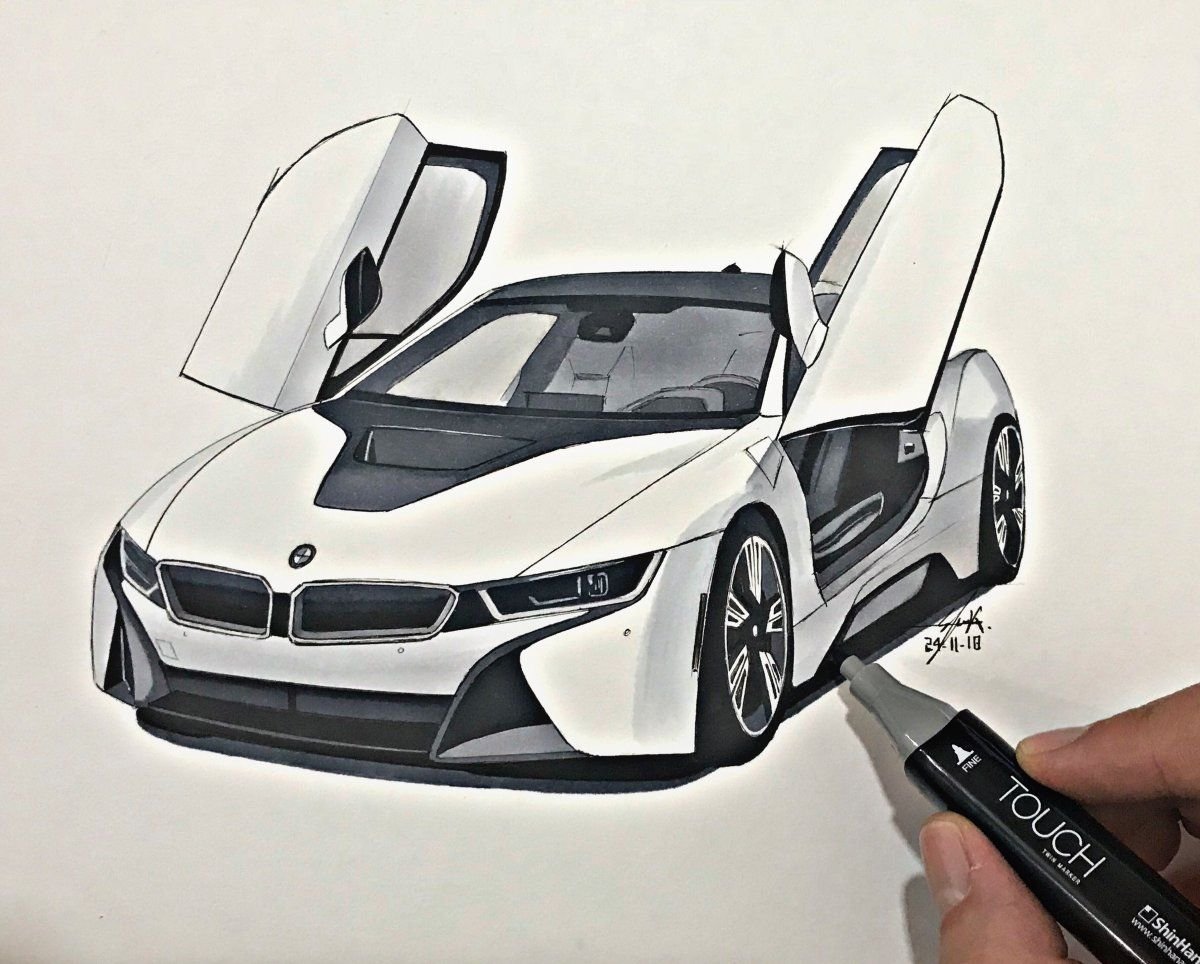Table of Contents
Introduction to Car Drawing
[Drawing:burmhcczepe= Car]
Drawing cars is a fascinating and rewarding endeavor for artists of all levels. Whether you’re an aspiring automotive designer or simply enjoy sketching vehicles, mastering the art of car drawing can significantly enhance your artistic skills. This guide aims to provide you with the essential knowledge and techniques to create detailed and realistic car drawings. We will explore the importance of car drawing, its historical context, and how it has evolved over the years. [Drawing:burmhcczepe= Car]
Getting Started with Car Drawing
Materials Needed
To begin your journey into car drawing, you’ll need a few basic materials. These include:
- Drawing paper or sketchbook
- Pencils (ranging from HB to 8B for varying shades)
- Erasers (kneaded and plastic)
- Ruler and compass for precise measurements
- Optional: Colored pencils or markers for adding color
Setting Up Your Workspace
A well-organized workspace is crucial for focusing on your art. Ensure you have good lighting, a comfortable chair, and a clean, clutter-free desk. Having all your materials within reach will help you maintain your creative flow without interruptions. [Drawing:burmhcczepe= Car]
Basic Techniques for Car Drawing
Understanding Shapes, Lines, and Proportions
Every car drawing begins with understanding the fundamental shapes and lines that make up a vehicle’s structure. Start by sketching simple geometric shapes like rectangles, circles, and triangles to represent the car’s body, wheels, and other components. Pay close attention to proportions to ensure your car looks realistic. [Drawing:burmhcczepe= Car]
Step-by-Step Guide to Drawing a Car
Drawing the Car Body
- Outline the basic shape: Begin with the car’s overall silhouette. Use light, loose lines to map out the main body.
- Add major components: Draw the roof, windows, and wheel arches, ensuring they’re proportionate to the body.
- Refine the shape: Add details like door lines, hood, and trunk outlines.
Adding Details
- Wheels and tires: Sketch the wheels, making sure they’re the right size and placement.
- Lights and grilles: Draw the headlights, taillights, and grilles with attention to detail.
- Mirrors and handles: Include side mirrors, door handles, and other small features.
Final Touches
- Refine the lines: Go over your drawing with a darker pencil to finalize the lines.
- Erase guidelines: Clean up any unnecessary lines with an eraser.
- Add shading: Use shading techniques to create depth and realism.
Drawing Different Types of Cars
Sports Cars
Sports cars are characterized by their sleek, aerodynamic shapes. Focus on capturing their dynamic lines and aggressive stance. [Drawing:burmhcczepe= Car]
Classic Cars
Classic cars have unique designs and intricate details. Pay special attention to chrome accents and vintage features. [Drawing:burmhcczepe= Car]
Modern Cars
Modern cars often feature smooth, flowing lines and advanced designs. Highlight their contemporary aesthetics and innovative elements. [Drawing:burmhcczepe= Car]
Advanced Car Drawing Techniques

Shading and Texturing
Shading is crucial for adding depth and dimension to your car drawings. Use a range of pencil grades to create gradients and textures that mimic the surfaces of a real car. [Drawing:burmhcczepe= Car]
Perspective and Depth
Understanding perspective is key to making your car drawings look three-dimensional. Practice drawing cars from different angles and viewpoints to enhance your skills. [Drawing:burmhcczepe= Car]
Tips and Tricks for Realistic Car Drawings

Capturing Reflections
Cars often have reflective surfaces, such as windows and body panels. Study real cars to see how light interacts with these surfaces and try to replicate it in your drawings. [Drawing:burmhcczepe= Car]
Highlighting Details
Small details, like the texture of tires or the pattern of a grille, can make a big difference in your drawings. Use fine lines and careful shading to bring these elements to life. [Drawing:burmhcczepe= Car]
Common Mistakes in Car Drawing and How to Avoid Them

Overcomplicating Details
It’s easy to get carried away with details, but too many can clutter your drawing. Focus on the most important features and keep the rest simple. [Drawing:burmhcczepe= Car]
Ignoring Proportions
Incorrect proportions can ruin an otherwise good drawing. Always check your measurements and compare different parts of the car to ensure they’re in harmony. [Drawing:burmhcczepe= Car]
Incorporating Backgrounds and Environments
Urban Settings
Drawing cars in urban environments can add context and interest to your work. Include buildings, roads, and other city elements to create a complete scene. [Drawing:burmhcczepe= Car]
Natural Landscapes
Cars in natural settings, like forests or mountains, offer a different kind of challenge. Capture the interaction between the vehicle and its surroundings for a dynamic composition. [Drawing:burmhcczepe= Car]
Digital Tools for Car Drawing
Software Recommendations
Digital drawing software, such as Adobe Illustrator or Procreate, offers advanced tools for creating detailed car drawings. These programs allow for precise control and easy editing.
Using Digital Tablets
Digital tablets, like Wacom or iPad with Apple Pencil, provide a natural drawing experience and are perfect for creating digital car art. Experiment with different brushes and textures to find your style.
Learning from the Masters
Famous Car Illustrators
Study the works of renowned car illustrators like Syd Mead and Chip Foose. Analyze their techniques and try to incorporate their styles into your own work.
Iconic Car Designs
Familiarize yourself with iconic car designs from different eras. Understanding the design language of classic models can inspire your own drawings.
Developing Your Own Style in Car Drawing
Experimenting with Techniques
Don’t be afraid to try new techniques and approaches. Whether it’s different shading methods or unique perspectives, experimentation is key to finding your style.
Finding Inspiration
Inspiration can come from anywhere, be it real-life cars, other artists’ work, or even your imagination. Keep an open mind and always look for new sources of creativity.
Practical Applications of Car Drawing Skills
Concept Art
Car drawing skills are invaluable in concept art for movies, video games, and product design. Your drawings can help visualize new ideas and bring them to life.
Automotive Design
Aspiring automotive designers need strong drawing skills to create and communicate their concepts. Detailed car drawings are essential in the design process.
Marketing Materials
Car drawings are often used in marketing materials for automotive companies. High-quality illustrations can showcase new models and features to potential buyers.
Car Drawing Competitions and Communities
Participating in Contests
Entering car drawing competitions is a great way to challenge yourself and gain recognition. Look for local and online contests to showcase your skills.
Joining Online Groups
Online communities, such as forums and social media groups, offer support and feedback from fellow artists. Sharing your work and engaging with others can help you grow as an artist.
Resources for Improving Your Car Drawing Skills
Books
There are many books dedicated to car drawing techniques. Titles like “How to Draw Cars Like a Pro” by Thom Taylor offer valuable insights and tips.
Online Courses
Websites like Udemy and Skillshare offer courses on car drawing, from beginner to advanced levels. These courses provide structured learning and expert guidance.
Workshops
Attending workshops and classes can give you hands-on experience and personalized feedback. Look for events in your area or online.
FAQs about Car Drawing
What are the best pencils for car drawing? The best pencils for car drawing range from HB to 8B, allowing for a variety of shades and depths. Mechanical pencils are also useful for fine details.
How can I improve my car drawing skills? Practice regularly, study real cars, and seek feedback from other artists. Use reference images and experiment with different techniques.
Do I need digital tools to draw cars? While traditional tools are sufficient, digital tools can enhance your work and offer more flexibility. Digital tablets and software provide advanced features for detailed drawings.
What should I focus on when drawing a car? Focus on proportions, perspective, and key details like wheels and lights. Capturing the car’s overall shape and character is essential for a realistic drawing.
Can I draw cars without any prior experience?
Yes, anyone can learn to draw cars with practice and dedication. Start with basic shapes and gradually add details as you gain confidence.
Are there any specific techniques for shading cars? Use a range of pencil grades for smooth gradients, and practice cross-hatching and stippling for texture. Study how light interacts with different surfaces to improve your shading.
Conclusion
Car drawing is a rewarding and enjoyable skill that opens up many creative possibilities. By following the techniques and tips outlined in this guide, you can develop your skills and create stunning, realistic car drawings. Remember, practice is key, and every drawing is an opportunity to learn and improve. So, grab your pencils, set up your workspace, and start drawing!
Chosenviber.net – Your Ultimate Source for Premium Vibes and More











